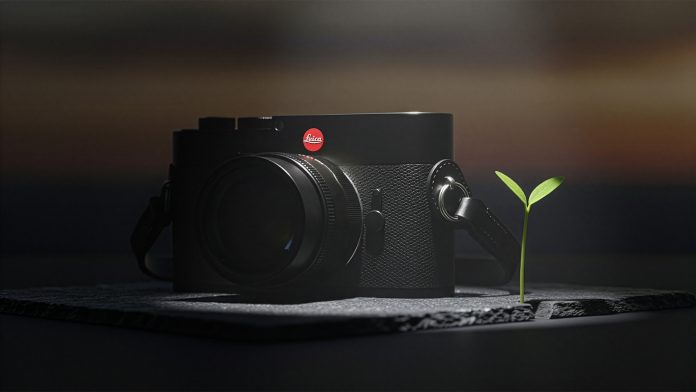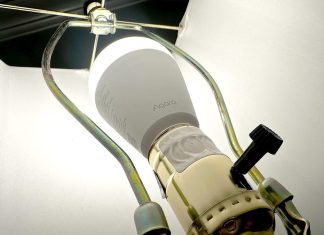
In 2005, Leica Camera AG was virtually insolvent after catastrophically missing the digital photography revolution. Twenty years later, the German manufacturer reports record revenue of €596 million for fiscal 2024/25, driven by aggressive diversification into smartphone partnerships, projectors, and other optical products. The Leica transformation culminates this month with the M EV1, Leica’s first M-series camera to replace the iconic optical rangefinder with an electronic viewfinder – a decision sparking fierce debate about whether the 150-year-old brand has compromised its soul to survive.
This article is based on reporting by German business publication manager magazin, which detailed both Leica’s corporate transformation and the controversial M EV1 announcement in its November 2025 issue.
The M EV1 represents a watershed moment for a company that nearly ceased to exist in 2005. Austrian entrepreneur Andreas Kaufmann, who rescued Leica through his family holding company ACM when the brand faced insolvency, has spent two decades proving that calculated risk-taking beats clinging to tradition. The new camera eliminates the rangefinder that has defined M-series operation since the 1950s – a decision that would have been unthinkable during Leica’s darkest days but now exemplifies the company’s willingness to challenge sacred ground rather than rest on historical laurels.

The 2005 crisis that nearly killed an icon
In 2005, Leica stood on the brink of bankruptcy. The company had fundamentally misjudged the digital photography revolution, watching competitors rapidly develop digital systems while Leica remained committed to analog cameras. The brand that had defined 35mm photography and captured defining moments of the 20th century suddenly faced irrelevance and insolvency.
Kaufmann stepped in when Hermès was the majority shareholder. “Leica was virtually insolvent,” he recalls to manager magazin. Despite the dire circumstances, he invested, brought in an interim CEO, and oversaw painful restructuring. “The company had to be financially stable before we could think about further development,” he explained. That financial stabilization took priority over product innovation for several years. Survival first, innovation later.

The turnaround proved remarkably successful. Leica CEO Matthias Harsch announced in September 2025 that the company generated €596 million in revenue with 2,400 employees worldwide, representing 7.6 percent year-over-year growth. The trajectory has been consistent: from €372 million in fiscal 2020/21 to nearly €600 million four years later.
“Leica Camera AG has undergone a transformation over the last 20 years from a traditional camera manufacturer with analog DNA to a digital system provider for high-quality photography, mobile imaging, sports optics, and smart projection,” Harsch stated.
The smartphone gamble that changed everything
When Apple introduced the camera-equipped iPhone in 2007 – with Steve Jobs famously comparing the iPhone 4’s design to a “beautiful old Leica camera” – industry observers predicted doom for dedicated camera manufacturers. Kaufmann saw it differently. Rather than viewing smartphones as existential threats, he recognized them as opportunities to expand Leica’s brand reach and gain mobile industry experience.
Starting in 2008, Leica pursued smartphone partnerships. After collaborating with Huawei from 2016-2022 (ending due to U.S. sanctions), Leica announced a strategic partnership with Chinese manufacturer Xiaomi in May 2022. The collaboration goes far beyond simple branding or logo licensing. Xiaomi and Leica established the Xiaomi x Leica Optical Institute at Xiaomi’s Beijing campus – a 2,644-square-meter facility dedicated to optical research covering lens design, optical films, precision machining, and materials development.
Four smartphone series have launched since 2022. The Xiaomi 14 Ultra features a quad-camera system with focal lengths from 12mm to 120mm using Leica Summilux lenses and variable aperture (f/1.8-f/4.0) on the main camera. Users select between “Leica Authentic Look” (natural color reproduction with characteristic vignetting) and “Leica Vibrant Look” (more vivid colors jointly developed). The Xiaomi 15 Ultra announced in early 2025 pushes further with a 200MP ultra-telephoto camera. Harsch has made multiple appearances at Xiaomi launches, positioning mobile imaging as “a key driver of Leica Camera AG’s sustained, profitable growth.”

Leica also partnered with Sharp for the Leitz Phone series exclusive to Japan, featuring Leica optics and design elements reminiscent of traditional M cameras. “Such partnerships are important because the smartphone industry works completely differently than ours,” Kaufmann explains. “Everything is based on mass production, quantities we alone cannot handle.” The mobile division now represents a substantial revenue stream alongside traditional cameras, fundamentally altering Leica’s business model from pure camera manufacturer to diversified optics and technology company.
Opening the L-Mount to competitors
Beyond smartphones, Leica demonstrated willingness to collaborate in its core camera business. In 2018, Leica partnered with Panasonic and Sigma to establish the L-Mount Alliance, opening its proprietary full-frame lens mount to competitors. The alliance has since expanded to include additional manufacturers including Chinese companies like TTArtisan and 7Artisans, plus DJI, Astrodesign, Blackmagic Design, and others. This represents a fundamental strategic shift for a luxury brand historically protective of its technology. By licensing the L-Mount standard, Leica gains broader lens ecosystem support for its SL-series cameras while collecting licensing revenue. The move acknowledges that closed ecosystems struggle in modern camera markets where lens selection often determines purchase decisions. Leica’s willingness to welcome Chinese manufacturers into the alliance particularly signals pragmatic acceptance of where optical innovation increasingly originates.

The M EV1: Challenging the rangefinder’s sacred ground
The willingness to partner with smartphone manufacturers – once unthinkable for a luxury camera brand– set the stage for an even bolder move: fundamentally reimagining the M-series itself. For readers unfamiliar with Leica’s M system: traditional M-series cameras use optical rangefinders showing photographers a view through a separate window rather than through the lens. Bright framelines indicate the capture area while a coupled rangefinder mechanism enables precise manual focus by overlaying two images that the photographer aligns. This system allows seeing beyond the frame edges, making it prized for documentary and street photography. Photographers from Cartier-Bresson to contemporary shooters have sworn by this experience.

The M EV1, announced in October, removes the rangefinder entirely. In its place: a 5.76-million-dot OLED electronic viewfinder with 0.76x magnification, showing the digital sensor feed with real-time exposure preview and electronic focusing aids. The decision was years in the making. “We had this consideration in our minds for a long time,” Leica product chief Jesko von Oeynhausen told manager magazin. The technology wasn’t mature enough earlier. “We wanted to thoroughly examine whether we could change the core of the M model with electronics.”
Given the M-series’ iconic status among photographers – roughly equivalent to a classic Porsche among car enthusiasts – the stakes were high. Internal debate was intense. But Leica proceeded with a clear rationale: “We wanted to make it easier for new customers to enter the world of the M-system,” von Oeynhausen explained, positioning the M EV1 as an accessibility play rather than a replacement for traditional rangefinder operation.

The camera shares its imaging foundation with the M11 family: 60MP full-frame BSI CMOS sensor with Triple Resolution Technology (shooting at 60MP, 36MP, or 18MP), Maestro III processor, 64GB internal storage plus SD card slot, and 4.5 fps continuous shooting. The former frame selector lever has been repurposed as a multifunction button for toggling focus peaking, magnification, or digital zoom. The body is 45 grams lighter than the M11, with the rangefinder window eliminated for a clean front design. Like recent Leica cameras, it includes Content Credentials technology for image authentication—particularly relevant for photojournalism in an AI-generated imagery era.
At $8,995 USD / €7,950, the M EV1 sits slightly below the M11-P in pricing. However, U.S. availability has been delayed pending FCC certification, while the camera launched as scheduled in October in other global markets.
Industry reaction: Value proposition vs. Leica mystique
Since the Leica M EV1 is really a photo camera and does not have any video features whatsoever, CineD decided to skip reviewing the camera. So let’s look at what some of our industry colleagues specializing more on photography had to say about it.
The photography industry’s response has been sharply divided, with criticism centering on whether the M EV1 justifies its price once the unique rangefinder experience disappears. DPReview’s assessment was blunt: “I can’t see the point in paying 91% of the cost of a Leica rangefinder, only to get something that isn’t a rangefinder.”
The value proposition question becomes acute when comparing specifications. The Sony A7C R offers 61MP, in-body stabilization, fast autofocus, and M-mount lens compatibility via adapter for under $3,000 – a $6,000 savings. Once you’re using an EVF with manual focus and no stabilization, competitors offer objectively superior specifications across the board. The 60Hz EVF refresh rate, while acceptable for stills, trails the 120fps EVF in Leica’s own Q3 cameras. Battery life ratings below 250 shots necessitate carrying spares.
Digital Camera World offered a more measured take, noting the M EV1 provides an alternative rather than replacement. Leica continues offering four traditional rangefinder models (M11, M11-P, M11-D, M11 Monochrom) for photographers who want the classic experience. The publication also pointed out that Leica’s Q-series has successfully used EVF-only operation for years, proving market appetite exists for Leica glass and build quality without optical viewfinders.
The target audience appears to be photographers who value M-series build quality and the extensive M-mount lens catalog (over 80 options) but prefer electronic focusing aids over rangefinder operation. This includes photographers with vision challenges, those using ultra-wide or telephoto focal lengths difficult to frame with rangefinder bright lines, and videographers who need video recording capabilities traditional M cameras lack.

Kaufmann’s philosophy: Forward or die
The M EV1 controversy reflects Kaufmann’s core philosophy about Leica’s survival. “If I’m ever proud of what we’ve achieved, then I’m out, because then I’m directing my gaze to the past,” he stated to manager magazin. This forward-looking approach extends across Leica’s expanding portfolio beyond cameras – projectors, watches, eyeglass lenses – all fitting within the company’s core expertise in optics and precision mechanics.
“For us, all business areas make sense where it’s about capturing light and precision mechanics,” Kaufmann explains. “This knowledge is needed not only in camera production but also in smartphones, home cinema projectors, and eyeglass lenses. At the end, we at Leica understand light incidence better than anyone because we’ve been doing nothing else for 100 years. Even when it gets dark sometimes.”
The M EV1 represents exactly the kind of calculated risk-taking that saved Leica from bankruptcy two decades ago. When faced with extinction in 2005, the company that had defined 35mm photography could have clung to analog purity and faded into history. Instead, it embraced digital technology, diversified aggressively into smartphones and other optical products, and found ways to make legendary optics relevant to new markets and new generations of photographers.

Whether the M EV1 succeeds commercially remains to be seen – and whether rangefinder purists accept or reject it may not ultimately matter to Leica’s bottom line. The smartphone partnerships, projector business, and eyeglass lens division now drive substantial revenue independent of traditional camera sales. The M EV1 demonstrates Leica’s willingness to challenge sacred ground rather than rest on historical laurels, even if it alienates some of the very photographers who kept the brand alive through its darkest period.
What the Leica transformation means for the camera industry
Leica’s transformation offers lessons for the broader camera industry struggling with smartphone disruption. The company’s near-death experience in 2005 could have been the end of the story – another legendary brand unable to adapt to digital reality. Instead, Leica’s survival strategy combined aggressive diversification, strategic partnerships leveraging brand heritage, and willingness to reimagine even its most iconic products.
The smartphone partnerships prove particularly instructive. Rather than viewing mobile cameras as pure competition, Leica monetized its optical expertise and brand cachet through collaboration. The Xiaomi relationship alone likely generates substantial licensing and co-development revenue while expanding Leica’s presence to millions of users who would never purchase a $9,000 camera. This diversification cushioned the blow when camera market volumes declined industry-wide.
The M EV1’s controversial rangefinder removal shows Leica believes the M-series must evolve to survive long-term. Traditional rangefinder users skew older; younger photographers raised on mirrorless cameras with EVFs may find rangefinder operation counterintuitive. By offering an M-mount camera with familiar EVF operation, Leica potentially expands its addressable market while maintaining the M-system lens ecosystem and manufacturing expertise. Whether this strategy works depends on execution and market acceptance—but doing nothing guarantees irrelevance.

The Leica transformation from near-bankruptcy to €596 million revenue demonstrates how heritage brands can survive technological disruption through aggressive diversification and calculated risk-taking. The controversial M EV1 represents the latest chapter in this evolution, removing the rangefinder that defined M-series cameras for 70 years in favor of electronic viewfinder operation. Whether you view this as innovation or sacrilege may depend on whether you prioritize Leica’s survival or its tradition.
What do you think about the Leica transformation strategy? Does diversifying into smartphones and removing the rangefinder compromise the brand’s soul, or is this pragmatic evolution necessary for survival? Don’t hesitate to let us know in the comments below!








